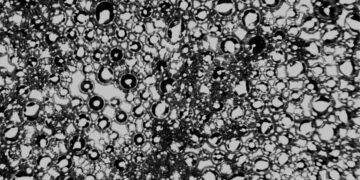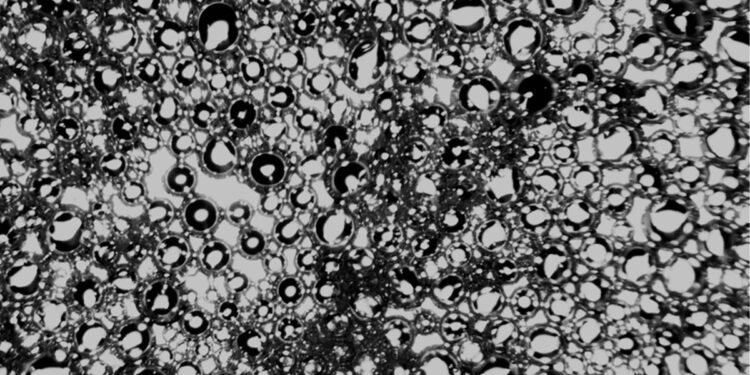This discovery (Researchers developed nanoscale technology to fight osteoporosis) uses ultrasound-sensitive nanobubbles to deliver treatment to the target area of the human body, avoiding the side effects associated with traditional osteoporosis treatments, such as osteonecrosis (delayed bone loss) and bowel problems.
Researchers at the University of Central Florida have developed a unique technology for the treatment of osteoporosis that uses nanobubbles to deliver treatment to targeted areas of the human body.
The new technology (Researchers developed nanoscale technology to fight osteoporosis) was developed by Mehdi Razavi, an assistant professor in the UCF College of Medicine and a member of the Bioonix cluster at UCF, and Angela Shar, a UCF biomedical science student in the Biomaterials and Nanomedicine Laboratory, as part of the laboratory. focus on tool development for diagnosis and treatment.
Osteoporosis is a disease in which there is an imbalance between the body’s ability to create new bone tissue, or ossification, and the breaking down or shedding of old bone, which is called resorption.
According to the Bone Health & Osteoporosis Foundation (BHOF), research shows that one in two women and up to one in four men aged 50 and over will break a bone due to osteoporosis. In addition, experts predict that by 2025, osteoporosis will cause approximately 3 million fractures and cost $25.3 billion annually.
Razavi says that the healthy body replaces old or damaged bone tissue continuously to ensure healthy bones.
“But when the rate of bone resorption increases more than bone formation, it leads to osteoporosis, a systemic disease of the bone system,” he says.
Most osteoporosis treatments today use drugs such as bisphosphonates to prevent bone loss. Side effects can include osteonecrosis of the jaw (delayed jaw healing) and bowel problems.
However, UCF’s invention uses nanobubbles that are sensitive to ultrasound to deliver therapy to a targeted area of the human body.
“There are many nanoplatforms for the treatment of osteoporosis,” says Razavi. “But the advantage of ultrasound-responsive nanobubbles is that they need ultrasound to destroy bubbles and transfer genes. Ultrasound itself can support bone formation.
A safe and healthy option, the UCF invention treats and prevents the effects of osteoporosis.
“It’s a double-acting technology,” says Razavi. “On the other hand, you reduce bone resorption, and on the other hand, you increase bone density with the help of ultrasound.”
In one exemplary application, nanobubbles carry silenced or inactive cells associated with osteoporosis, cathepsin K small interfering ribonucleic acid (CTSK siRNA).
Razavi says the nanobubbles also protect the siRNA by interacting with its environment and target osteoclast cells, which are bone cells that carry the CTSK gene. CTSK is a key factor in the bone formation process. “So we control, reduce the high expression of [bone] genes using siRNA,” he says.
He added that the delivery system also helps to reduce the release of the treatment and to extend the effectiveness of the gene protection system.
Each nanobubble encapsulates the treatment in a gaseous core and liquid perfluorocarbon shell.
“The gas allows us to photograph and track the nanobubbles,” says Razavi. “It is added to the particles that can protect the bones.”
“The bubbles go into the bone cells, look for and find the genes that cause osteoporosis, and they bury the CTSK siRNA that creates the complex,” he says. “This complex is a constant, and that will lead to a kind of reduction or shutting down of these genes. When you measure the expression of cathepsin K, you will get its low expression.
For control, system release and personalized treatment (for example, low power for advanced fractures and high power for deep wounds), ultrasound parameters can be changed, including exposure time, power, frequency and waveform type. Razavi cited other uses of the invention.
“You can use it for cancer and other applications, like neurodegenerative diseases like Alzheimer’s disease,” he says.
One of the advantages of nanobubbles over microbubbles is their ability to cross cell membranes to deliver therapeutic agents.
“Ultrasound can open the blood-brain barrier to facilitate the entry of nanobubbles into nerve cells for gene delivery,” he says.
Chemotherapy drugs can be put into bubbles and injected into the tumor. Also, since these bubbles contain gas, they can give oxygen.
“One solution here is to provide oxygen to the tissue to help it regenerate,” he says. “We are trying to find ways that can be delivered globally, that are non-invasive, that are widely available, that are portable, and that are cheap.”





































